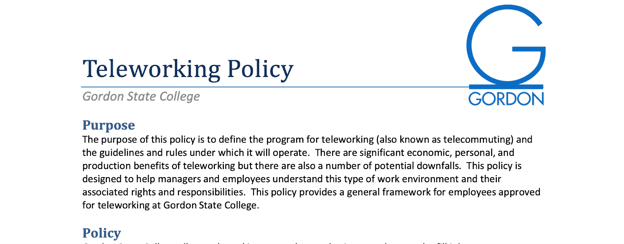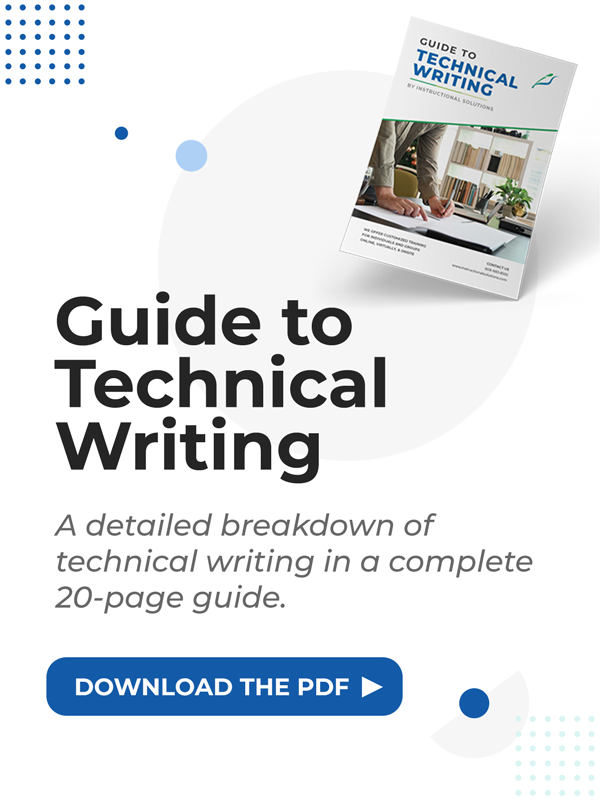Have you ever heard of the “hit by the bus” rule?
Ever wondered what the purpose of a policy summary is? Think of it as your company’s “survival guide.” It’s a clear, concise roadmap that ensures operations run smoothly no matter what happens. Business leaders often joke about the “hit by the bus” rule: if a key employee suddenly couldn’t work, could the business still function without chaos? That’s exactly where a well-written policy summary steps in. It distills essential procedures, expectations, and responsibilities into a quick reference, making sure everyone stays aligned.
In this guide, we’ll break down why policy summaries matter, purpose of a policy, how they protect your business, and the key steps to creating one that truly works.
What is a Policy Summary
A policy is a type of technical document that presents a set of guidelines or rules to govern an organization. Policies can normally be found in an employee handbook but can also be found in an online library like Coca-Cola’s.
Think of a policy as a written plan of action. Policies offer general statements to guide all decision-making at a company. They ensure that operations meet daily requirements based on industry regulations.
- Public policy (e.g., governmental ones)
- Organizational or company policy (e.g., created by individual companies)
- Functional policy (e.g., departmental ones)
- Specific policy (e.g., insurance policy)
Your readers will depend on the type of policy, but will likely be multiple ones and different knowledge levels about the topic. That’s why clarity is a key aspect of policy writing. A policy should include clear substance or content and clear language.
A policy is NOT a how-to document for following the rules – that's a procedure that can be part of a policy. A procedure defines the steps to effectively enact the policy. It outlines who shall do what and when (e.g., The admin assistant will answer the telephone by the fourth ring).
Policy Examples
Let’s start with a simple example. Say you run a customer-facing business, such as a coffee shop. Your employees will sometimes be exposed to upset customers. You might create a policy or rule as to what to do in this situation:
- Policy: Do not confront angry customers.
- Procedure: The steps to defuse the situation appropriately (e.g., get the manager).
Another great example: This teleworking policy from Gordon State College outlines the college’s position on working from home. The document starts with the purpose: define the teleworking program (also known as telecommuting) and the guidelines and rules under which it will operate.

[Source]
It then gives a policy statement:
Policy: Gordon State College allows teleworking on a voluntary basis to employees who fill job classifications/positions that have been designated by the departments as eligible for teleworking. The Gordon State College telework program is an employer option, not an employee right, and is appropriate only when it results in a mutual benefit to both the employee and to the institution.
The document also covers relevant definitions and then procedures (steps to act out the policy).
What is the Purpose of a Policy Summary?
A policy summary is more than just a condensed version of a company policy; it’s a clear, accessible reference that ensures employees and stakeholders understand the intent, scope, and critical points of the policy without needing to read the full document every time. It acts as a roadmap, guiding actions and decisions while ensuring compliance with organizational standards and legal requirements.
So, what is the purpose of a policy summary? At its core, it exists to make policy information easier to digest and apply in real-life situations. Whether you’re explaining workplace safety guidelines, outlining a new remote work framework, or detailing ethical conduct expectations, a policy summary distills the “what” and “why” into an easy-to-read format. This clarity not only helps employees act confidently but also fosters consistency across departments.
Key Components of a Policy Summary
While the length and complexity of a policy summary may vary depending on the topic, there are a few essential elements that make it effective and actionable. These components ensure the summary remains concise while still conveying the policy's purpose and practical implications.
Policy Title
The policy title should be short, specific, and instantly recognizable. A clear title eliminates confusion and ensures employees can quickly locate the correct document. For example, “Remote Work Policy” is far more effective than “Working From Home Guidelines and Requirements.” A strong title also signals professionalism and consistency across the organization’s policy library.
Purpose Statement
The purpose statement answers the fundamental question: Why does this policy exist? It communicates the intended outcome and connects the policy to broader organizational goals. A well-written purpose statement keeps readers aligned with the policy purpose and emphasizes why following the guidelines is essential for both compliance and operational success.
Scope
The scope section defines who the policy applies to and under what circumstances. For example, a policy brief on social media usage might apply only to marketing and communications staff. Clearly stating the scope prevents misinterpretation, ensures relevance, and avoids wasting time for employees who are not affected.
Summary of Key Points
This section distills the full policy into its core directives, rules, and expectations. It should highlight the most important takeaways without overwhelming the reader. Bullet points or short, direct sentences work best here, ensuring the summary remains quick to scan while retaining its authority.
Roles and Responsibilities
Clarifying roles and responsibilities ensures everyone knows who is accountable for implementing, monitoring, and enforcing the policy. Whether it’s HR, department managers, or employees themselves, outlining responsibilities upfront improves compliance and helps maintain consistency in policy application.
Why Is Policy Writing Important for Your Company?
Policy writing creates order and structure in a company or organization. Policies state what’s acceptable and what’s not acceptable in a workplace, following in line with local, state, and federal regulations.
Why is this important? Here are the key reasons:
- Reduces ambiguity and confusion in different workplace situations.
- Gives the reason why and helps enforce rules.
- Provides consistency, which helps with growth and expansion.
- Ensures compliance with laws and minimizes legal risks as codes of practice change.
- Gives an efficient and professional framework for business operations and planning.
- Assists with employee performance reviews.
Let’s look at the importance of policies in action:
25-year-old Susan Fowler worked as a software engineer at ride-share company giant Uber. In February 2017, she published an essay, speaking out against the sexual harassment experienced at the company and other misconducts where no rules or protocols were in place. That same year, the CEO resigned due in part to the series of scandals and sexual allegations. The company adopted clear harassment policies as a result.
In short, policies ensure safety and best practices are understood in the daily life of a company’s operations and activities. They set the standard of behaviors, offering a decision-making framework to ensure fair, rational decisions are made when problems or situations arise.
Get individual expert feedback on your actual policy writing.
View the Course
Pros and Cons of Writing a Policy
As with any work document, there are advantages and disadvantages. Here are a few of each with policies:
Pros:
- Policy rules and standards ensure that operations are orderly and fair.
- Policies are flexible and can be updated as changes occur.
- They can be vital in legal cases, proving the company followed regulations.
- Policies are important reference documents when problems arise.
Cons:
- Readers can sometimes blindly follow a policy without using common sense.
- Policies can quickly become outdated and not reflect current standards.
- Policy writing isn’t cheap. Even if you don’t outsource the writing, you’ll often have to pay for research and legal consultation.
- There can be too many policies or conflicting ones, creating confusion.
- Policy rules and guidelines don’t always match the actual operations, hindering productivity.
However, careful research, wording, and internal/external feedback can help you overcome common disadvantages of company policies.
Getting Started With Policy Writing: How to Prepare
Strong policy writing is an art form, and policies are not a one-size-fits-all. Topic expertise and careful preparation are two critical factors for writing company policies.
Are you qualified to write the policy? Or can you collaborate with a team of thought experts? A thought expert will have a detailed understanding of the type of policy needed and the processes already in place. For example, a Hand Hygiene policy at a hospital should be written by an Infection Control practitioner who is an expert on the floor.
If yes, let’s review how you can best prepare to write effective policies within your organization.
Do's and Don'ts of Policy Writing
Here’s what a good policy should and shouldn’t do:
Do’s:
- Consider any existing policies on that topic.
- Be industry and organization-specific.
- Protect your organization legally.
- Follow accreditation standards if your company is accredited.
- Conduct thorough research and involve stakeholders.
- Know your audience and purpose.
- Clearly define the what and the why.
- Use clear language that anyone can understand.
- Follow a consistent format.
Don’ts:
- Overcomplicate with dense, complex language.
- Include specific names (refer to the role, not the current employee).
- Be ambiguous with the content and language.
- Overlook regulatory and legal requirements.
- Ignore feedback from stakeholders (i.e., decision-makers), employees, etc.
Also, don’t simply copy and paste content from an old policy or another company’s or organization. Reusing some information is fine, but this practice can lead to irrelevant and bloated content for the reader. Policies should be specific to your company and match daily operations.
Format of a policy document
Policy format standardization ensures consistency across company policies. Typically, the policy format should include:
- The correct logo and brand colors.
- Policy name and number.
- A legal disclaimer in the policy's footer.
It can help to create a format template to follow for all policies (just make sure not to blindly follow the template – think critically about the content). Whatever format you follow, incorporate headings and bullets. These elements help the reader skim and easily digest the information.
Use a standardized format for any policy so readers can quickly scroll to the information they need.
Design and Layout of a Policy Document
As mentioned, there’s no “one-size-fits-all” with a policy. The structure or the organization of the sections will depend on the policy type, but the overall layout will look similar.
Below is an example structure for an accident reporting company policy:
- Policy brief & purpose
- Scope (who the policy affects)
- Policy statement and elements (what should be reported)
- Procedure for reporting
- Disciplinary consequences
Check out these examples to inspire the design and layout of your policy document:
Read more: Guide to Strong Policy Writing
Writing Style for a Policy
Use precise words and short sentences. No need to use fancy words in a policy. Write in easy-to-understand language and short sentences. Hemingwayapp.com is a site that helps you to write like Hemingway. Also, avoid jargon and spell out acronyms.
Write in the active voice. Active voice is more engaging than passive voice. In active voice, the subject of the sentence is the doer of the action (e.g., "all employees must adhere to these steps"). In passive voice, the subject of the sentence is what's being acted upon (e.g., "these steps must be adhered to by all employees").
Follow a style guide. A style guide helps you write in a particular style. It provides a set of standards or writing rules/recommendations for the tone, grammar, and structure of a technical document. If your company doesn't already follow a particular one (e.g., AP Stylebook), here's a list of technical writing style guides to consider.
Read more: What is Plain Language?How to Write a Policy for Your Business and Employees
Policy writing should not be based on the personal preferences of a department head or management, for example. Instead, policy writing should incorporate legal considerations, what’s best for the company as a whole, and ramifications.
How to Write an Effective Policy Summary: Key Steps
Below are steps to write a strong policy tailored to your company.
Step 1: Perform internal research
Your first step is to identify the need for a particular policy.
- Find thought experts and an overall team to collaborate on the policy.
- Review your company’s operations, responsibilities, and activities.
- Interview employees to better understand the current environment and ensure your understanding isn’t based on assumptions.
- Look at any existing policies to see what’s currently being required.
As external research, review new compliance or regulatory issues that will require new policies or revisions to existing ones.
Step 2: Identify the policies you want to create
Create a list of policies needed based on your research. Rather than tackling them all at once, determine a policy schedule with an order and dates to be completed. Order from “Most Important” to “Least Important.”
Also, for each policy, write down the target reader and what you want them to know or do. As an illustration, let’s go back to the dress code policy example:
- Who is my reader? My reader includes all staff members at the company. They are knowledgeable about our focus on professionalism with daily company activities, but attire currently ranges from formal business attire to very informal (e.g., T-shirt and jeans). Some members might be frustrated by the new policy, so a clear explanation as to why will be important.
- What do I want them to know or do? I want the reader to understand what our dress code policy is, why we’re enforcing it (e.g., to match our client base), and for them to follow the standards.
This audience analysis will guide your policy. We also recommend determining the best delivery strategy at this step. Will this policy be in a printed employee handbook? Will it live online? Choose a channel that will be easy for the reader to use and find information.
Become a strong policy writer in our online technical writing course
Download Outline
Step 3: Include the key elements in the policy
With your reader and purpose in hand, generate the content or elements that will go into the policy. This step is about planning.
Don’t jump into drafting. Instead, write down ideas and begin organizing the information. Anticipate any questions from the reader and what could go wrong. Once you have your content, place everything into a clear, logical order (an outline can be very helpful).
Include elements like:
- Title. What is the name of the policy? A title should be clear, short, and informative.
- Summary and policy purpose. Summarize the reasons behind the policy with intended outcomes and goals. Let the reader know what the policy aims to achieve.
- The scope. Share who the policy applies to. The “who” should be attached to specific roles, not an individual.
- The policy statement. Detail what the policy is, which role or location it covers, and when it’s applicable. For example, articulate whether the policy is a general rule or related to a specific task (e.g., responding to customer questions).
- Other details or definitions. Give any additional details (e.g., a list of what qualifies as formal business attire or special cases when the employee can use their cell phones). Include any definitions related to the policy if needed by the reader.
- Disciplinary consequences. Let the reader know what will happen if the rules aren’t followed. If you’re writing a dress code policy, outline what you are going to do if, for example, someone shows up in shorts and sandals. You might state that the employee will receive a written reprimand or be sent home.
Discuss your plan or policy outline with any decision-makers to get a consensus on the content before you begin drafting.
Step 4: Create content for each element of the policy
Time to draft. Follow the KISS acronym – keep it simple, stupid. You can be simple without being simplistic. Keep your reader’s knowledge level in mind because they will be the ones implementing the document.
Using your plan as a guide, write a policy that is detailed but short. If you find the policy is growing longer, you might need to create a separate policy to help with brevity.
Write the document so the reader has no problem interpreting and applying. Here’s an example of wordy writing and clear writing. Notice the difference?
- Wordy writing: "All sales reps are required to ensure that mileage reimbursement only applies to the use of their personal vehicles during client work trips.”
- Clear writing: “Sales reps must ensure that mileage reimbursement is only used when personal vehicles are driven for client work trips.
Hint: Be broad in your wording and use generic terms (e.g., “sales CRM” vs. “Zendesk”). You can be more detailed in the procedures. Also, carefully consider your word choice. For example, “must” implies a requirement, while “should” indicates a choice.
Step 5: Add more information to clarify the policy for stakeholders
Once you have the first draft, go back through it to check for holes in the content. A gap analysis can be helpful. Solicit feedback and input from stakeholders.
Step 6: Revise, review, and format the policy
Edit the policy again. Also, have someone else read it. Your policy team is crucial, but also a licensed professional, consultant, or attorney with knowledge of your industry and regulations.
Based on their feedback, revise and edit again. Proofread as a final step. Run through a tool like Grammarly to avoid grammatical mistakes and errors.
Step 7: Approve and publish
Send the final draft to appropriate stakeholders to obtain approval. When we say appropriate, determine leadership that makes the most sense to sign off on the document. For example, a manager might approve a policy rather than the CEO if they’re closely tied to the particular operation.
Once approved, make a plan to publish, introduce, explain to, and train all staff on the policy. Include training on how to explain to clients when the changes affect them.
Read more: How to Write an Effective Policies and Procedures Manual
Ready to Write Clearer Policies? We Can Help
Writing a policy summary that’s both clear and comprehensive isn’t easy. It requires the right structure, precise language, and a deep understanding of the audience. That’s where our Technical Writing Foundations course comes in.
We’ll show you exactly how to plan, draft, and format policies and policy briefs so they’re easy to read, apply, and enforce. Whether you’re creating your first policy or refreshing an entire policy library, our expert feedback and proven frameworks will help you create documents that support compliance, minimize risk, and enhance efficiency.
Conclusion
Understanding what is the purpose of a policy summary is the first step toward creating effective, actionable workplace policies. By focusing on clarity, scope, and key points, you make it easier for employees to follow rules, uphold standards, and work toward common goals. A strong policy summary is more than an internal document. It’s a tool for communication, consistency, and organizational success.
Frequently Asked Questions
1. Who should write the policy summary?
Ideally, it should be written by a subject matter expert or policy writer who deeply understands the policy’s purpose, scope, and intended audience. This ensures accuracy, clarity, and alignment with the organization’s objectives.
2. How long should a policy summary be?
A policy summary should be concise yet complete, usually one page or less, so it’s quick to read. The goal is to capture the essential points without overwhelming the reader with unnecessary details.
3. Should policy summaries include legal language?
Use legal terms only if they are essential for compliance or clarity. In most cases, keep the language simple and accessible so all readers can easily understand the policy’s intent.
4. How often should policy summaries be reviewed or updated?
Review them at least once a year to ensure accuracy and relevance. They should also be updated promptly whenever the full policy undergoes significant changes or legal requirements shift.
5. What’s the difference between a policy summary and a full policy?
A policy summary distills the key points, purpose, and intent of the full document for quick reference. The full policy contains in-depth explanations, procedures, and step-by-step guidelines.
6. What tone should a policy summary use?
The tone should be professional yet approachable, avoiding unnecessary jargon. Clarity and accessibility are key so readers from all backgrounds can grasp the policy’s message.






